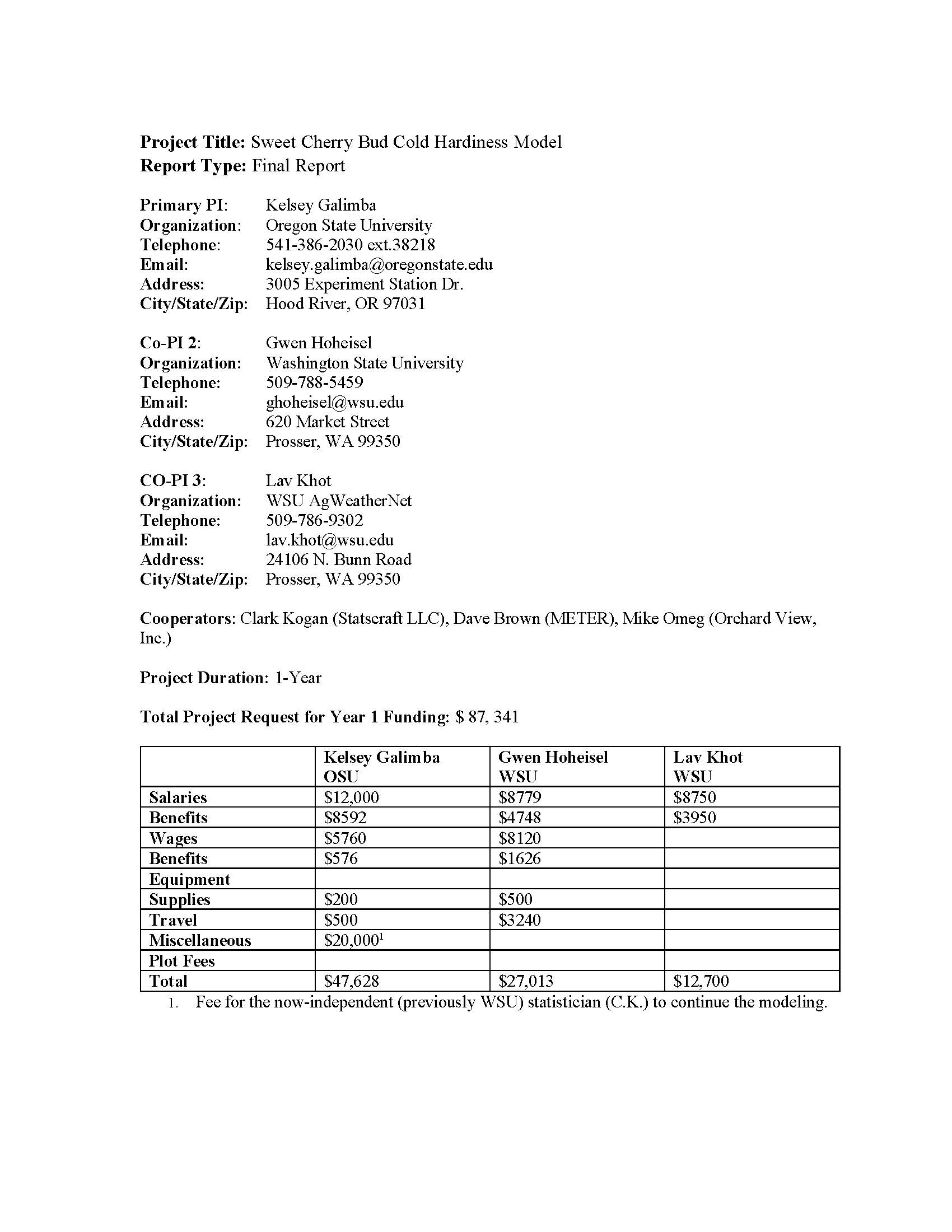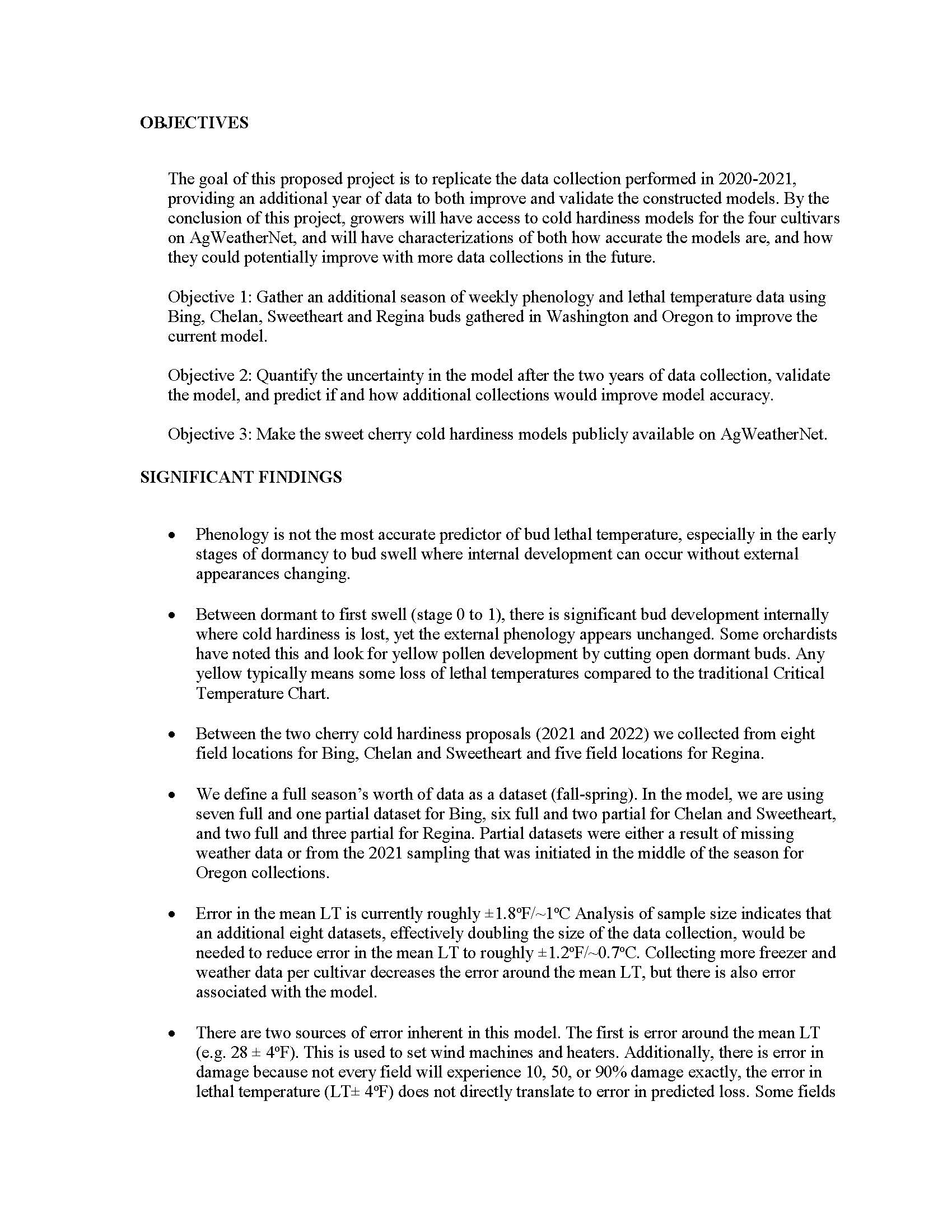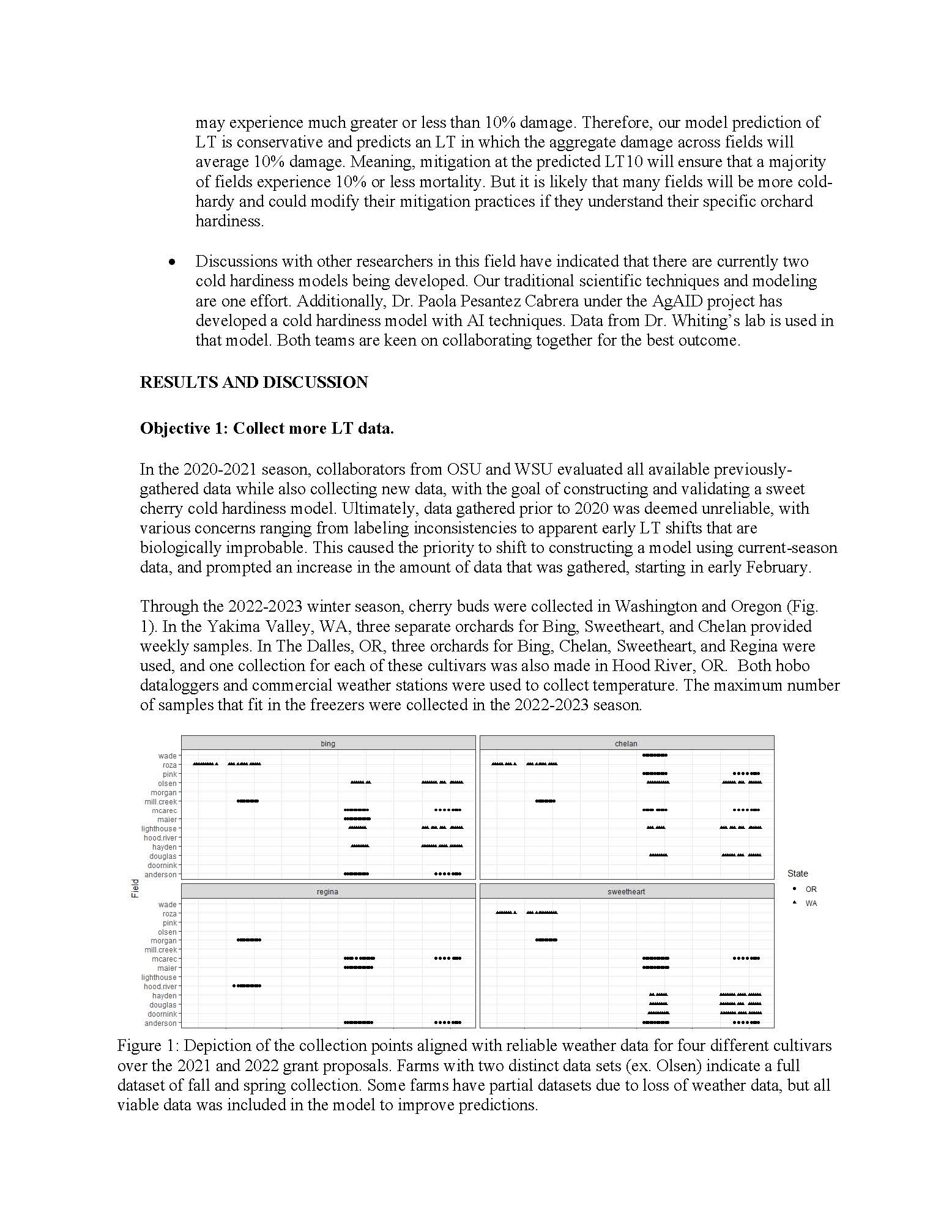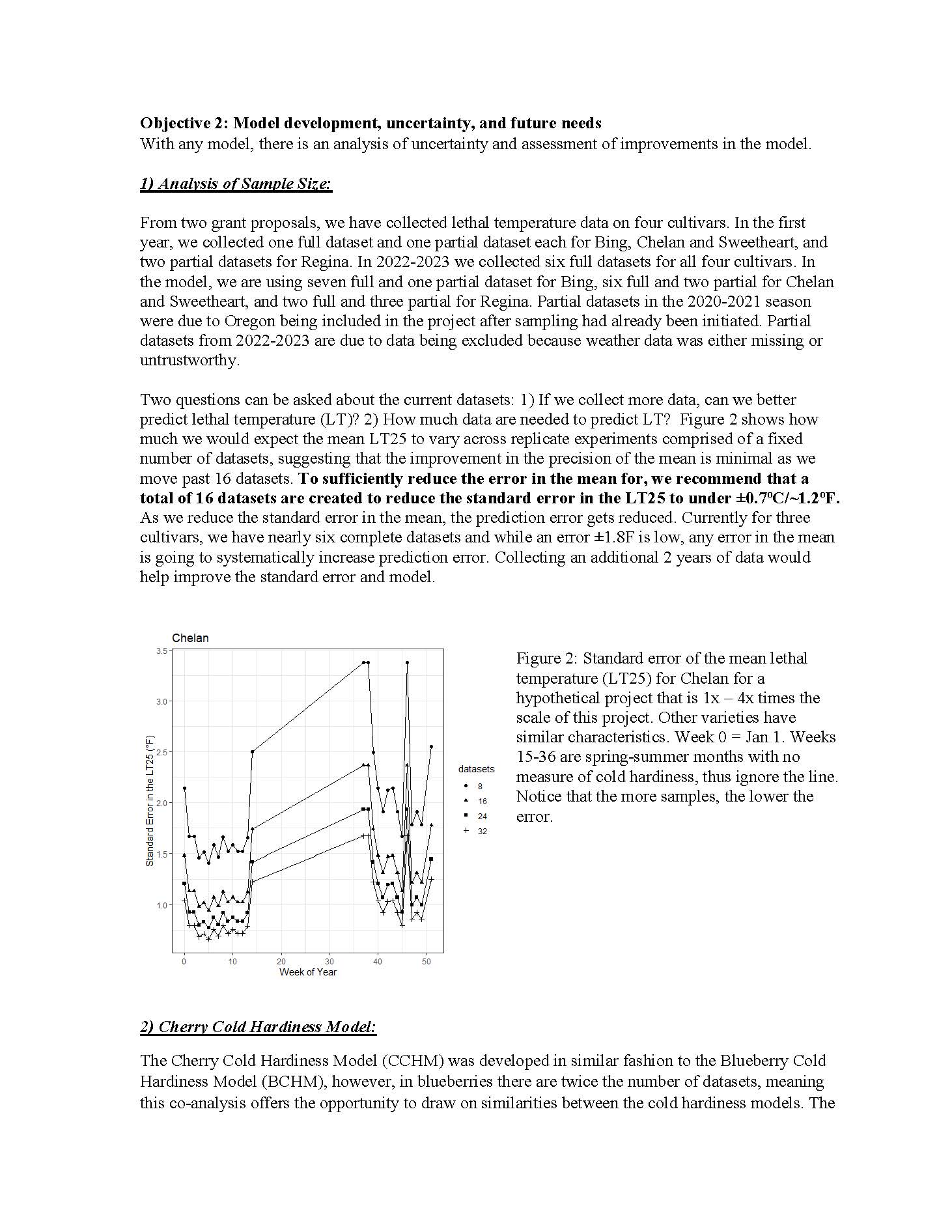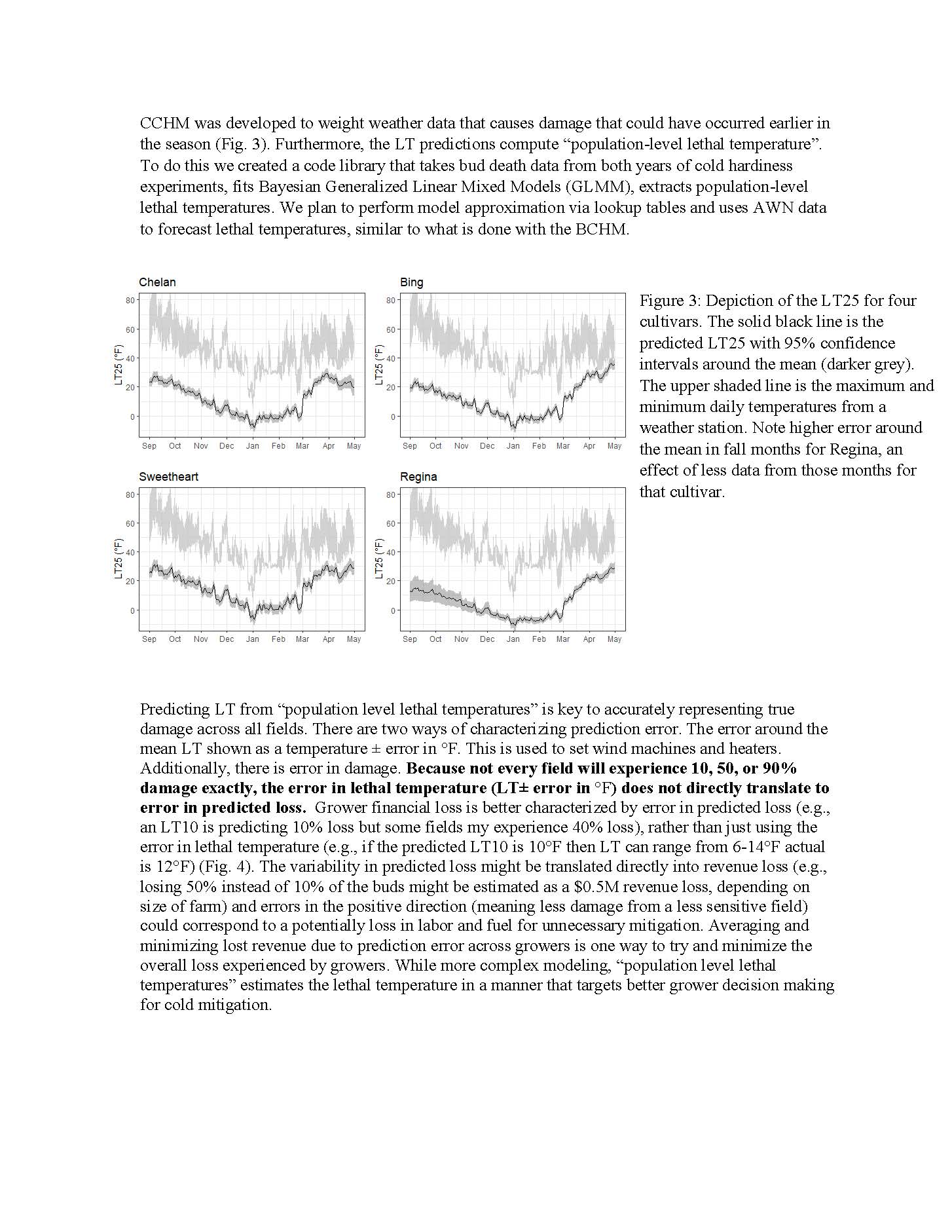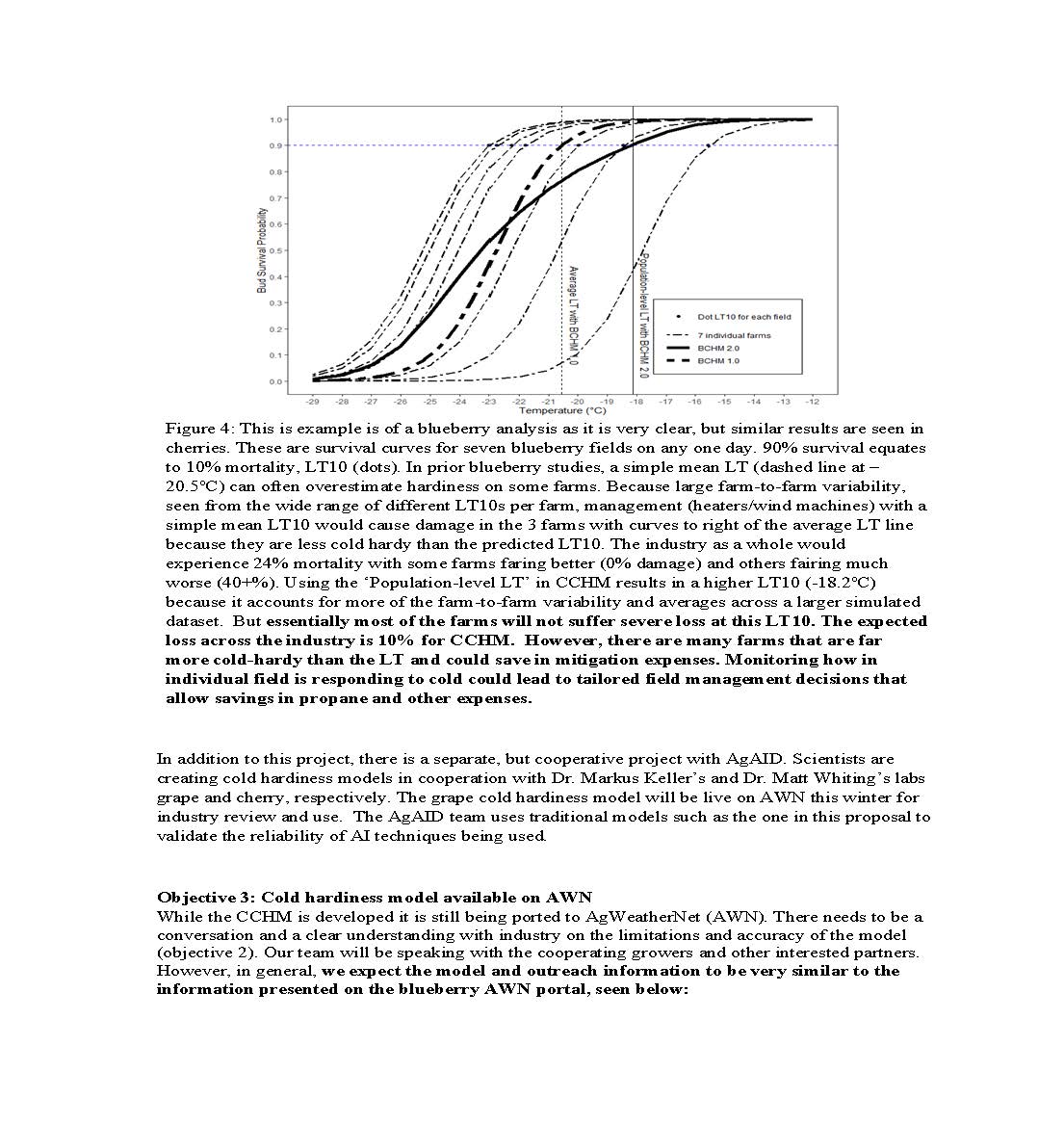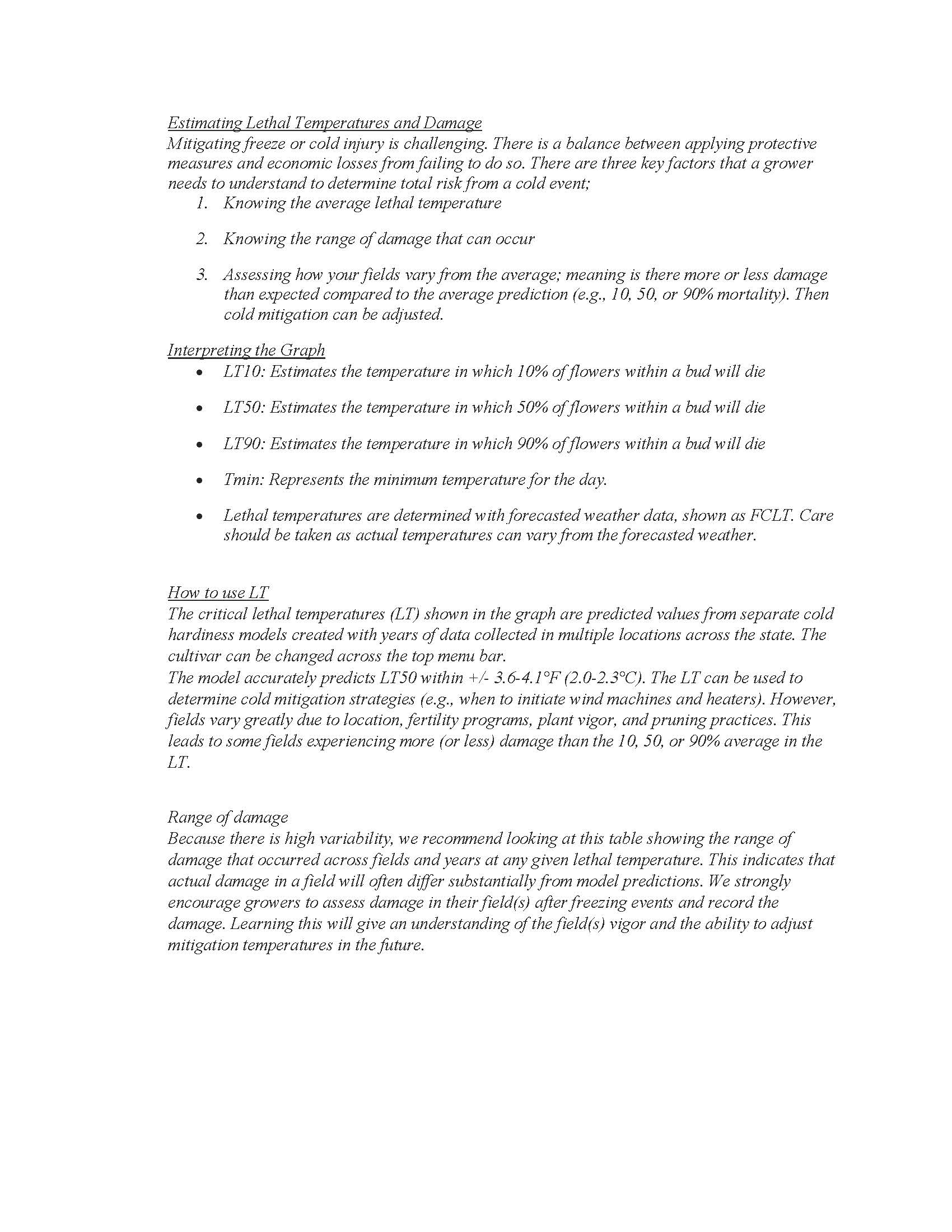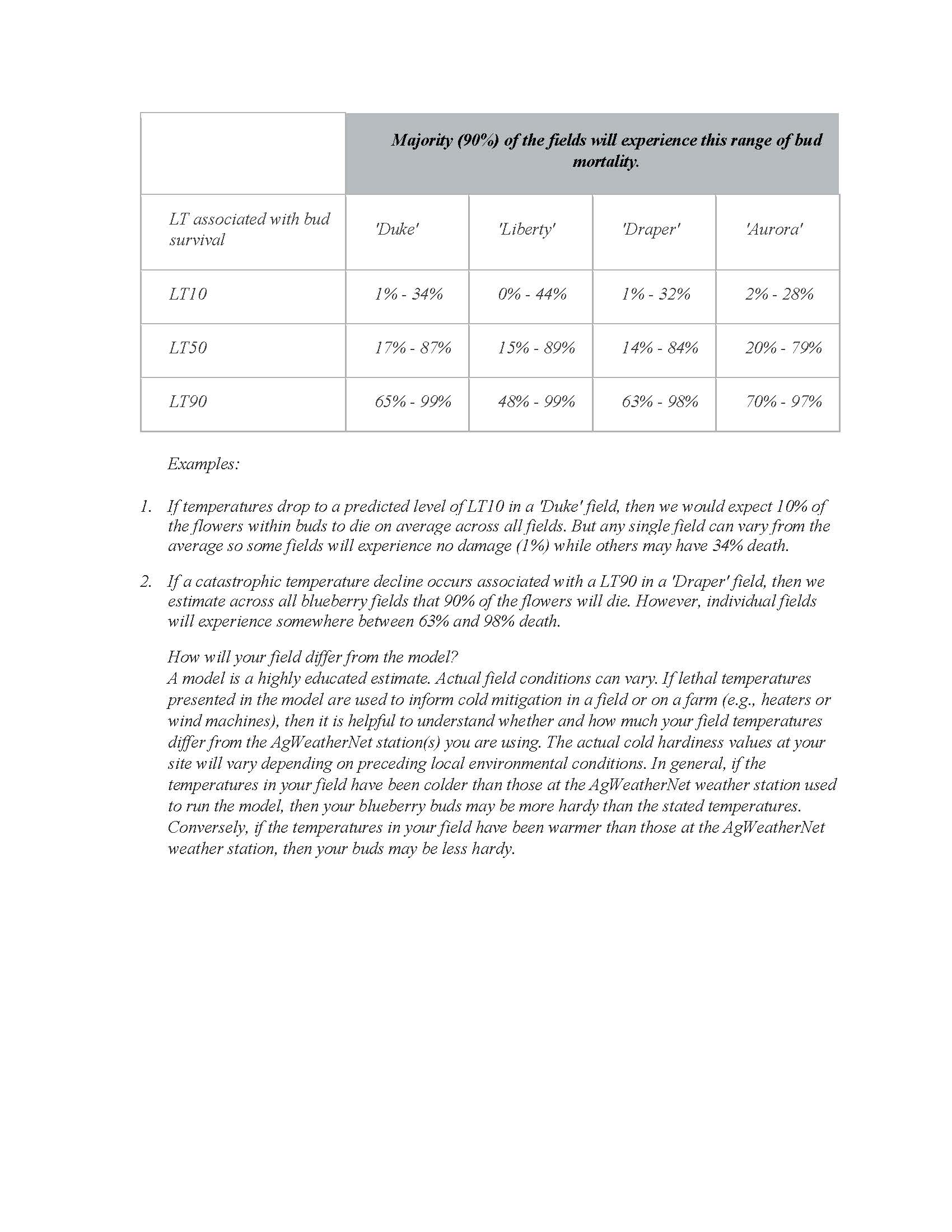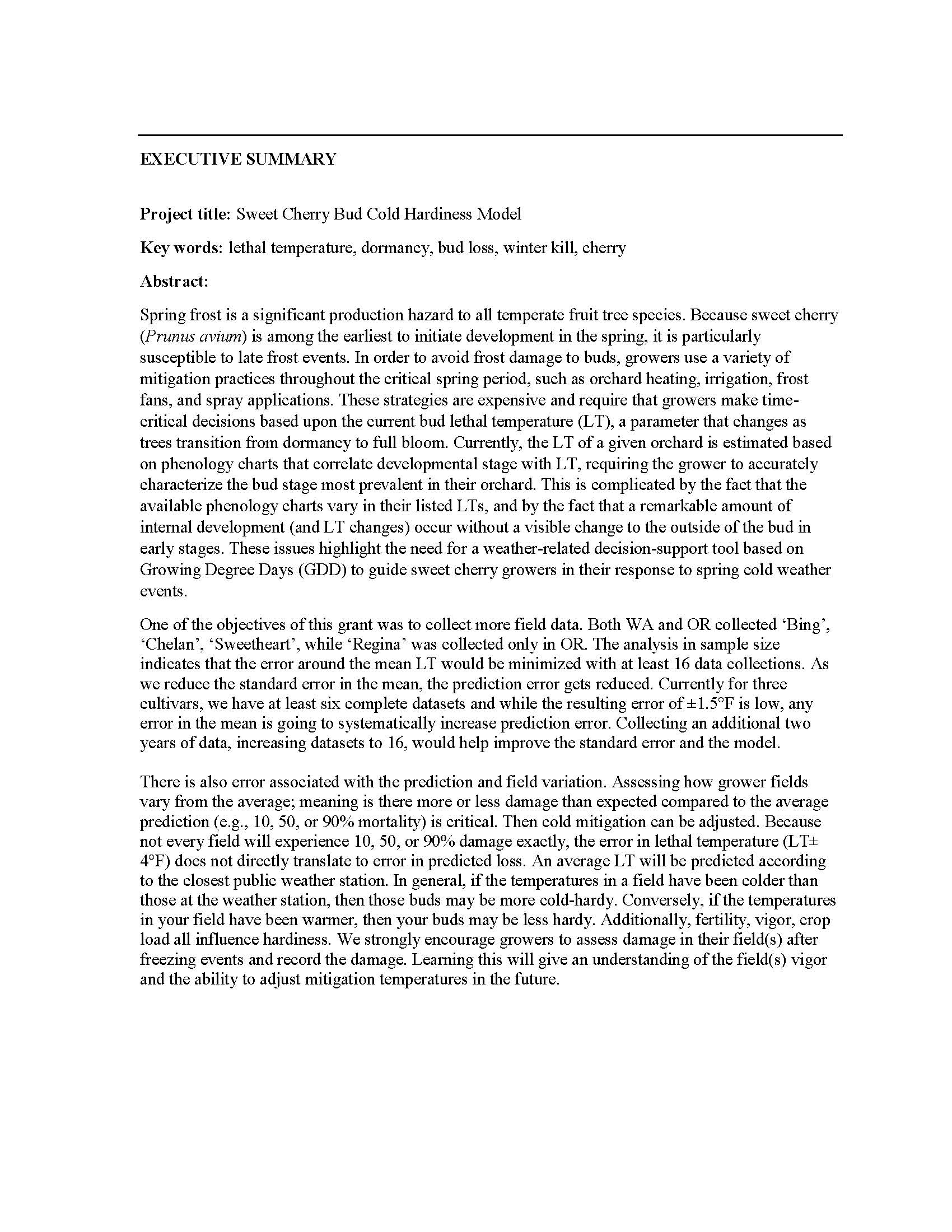Sweet Cherry Bud Cold Hardiness Model
Author: Kelsey Galimba
Published: 2024
Summary: Spring frost is a significant production hazard to all temperate fruit tree species. Because sweet cherry (Prunus avium) is among the earliest to initiate development in the spring, it is particularly susceptible to late frost events. In order to avoid frost damage to buds, growers use a variety of mitigation practices throughout the critical spring period, such as orchard heating, irrigation, frost fans, and spray applications. These strategies are expensive and require that growers make time-critical decisions based upon the current bud lethal temperature (LT), a parameter that changes as trees transition from dormancy to full bloom. Currently, the LT of a given orchard is estimated based on phenology charts that correlate developmental stage with LT, requiring the grower to accurately characterize the bud stage most prevalent in their orchard. This is complicated by the fact that the available phenology charts vary in their listed LTs, and by the fact that a remarkable amount of internal development (and LT changes) occur without a visible change to the outside of the bud in early stages. These issues highlight the need for a weather-related decision-support tool based on Growing Degree Days (GDD) to guide sweet cherry growers in their response to spring cold weather events.
Keywords:

